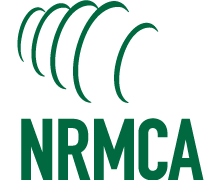
| Archive | nrmca.org | E-Store | Conferences & Events | Certifications | InFocus |
MIT Researchers Release Study That Shows Stiffer Pavements Reduce Vehicle Fuel Consumption Stiffer pavements would decrease deflection and reduce a car’s "footprint." "This work is literally where the rubber meets the road," says Professor Franz-Josef Ulm, the George Macomber Professor in MIT’s Department of Civil and Environmental Engineering. "We’ve got to find ways to improve the environmental footprint of our roadway infrastructure....." For a full press release from MIT, go to http://web.mit.edu/press/2012/pavement-savings-tires.html. The completed research report is accessible at http://web.mit.edu/cshub/news/pdf/PVI_Report-2012.pdf. The research clearly points to the need for a renewal of the nation’s highway system overall. The researchers say the initial cost outlay for better pavements would quickly pay for itself not just in fuel efficiency and decreased CO2 emissions, but also in reduced maintenance costs. The study, released in a recent peer-reviewed report, is the first to use mathematical modeling rather than roadway experiments to look at the effect of pavement deflection on vehicle fuel consumption across the entire U.S. road network. A paper on this work has also been accepted for publication later this year in the Transportation Research Record. This research was conducted as part of the Concrete Sustainability Hub at MIT, which is co-sponsored by the Ready Mixed Concrete Research & Education Foundation and Portland Cement Association. |
|
|




